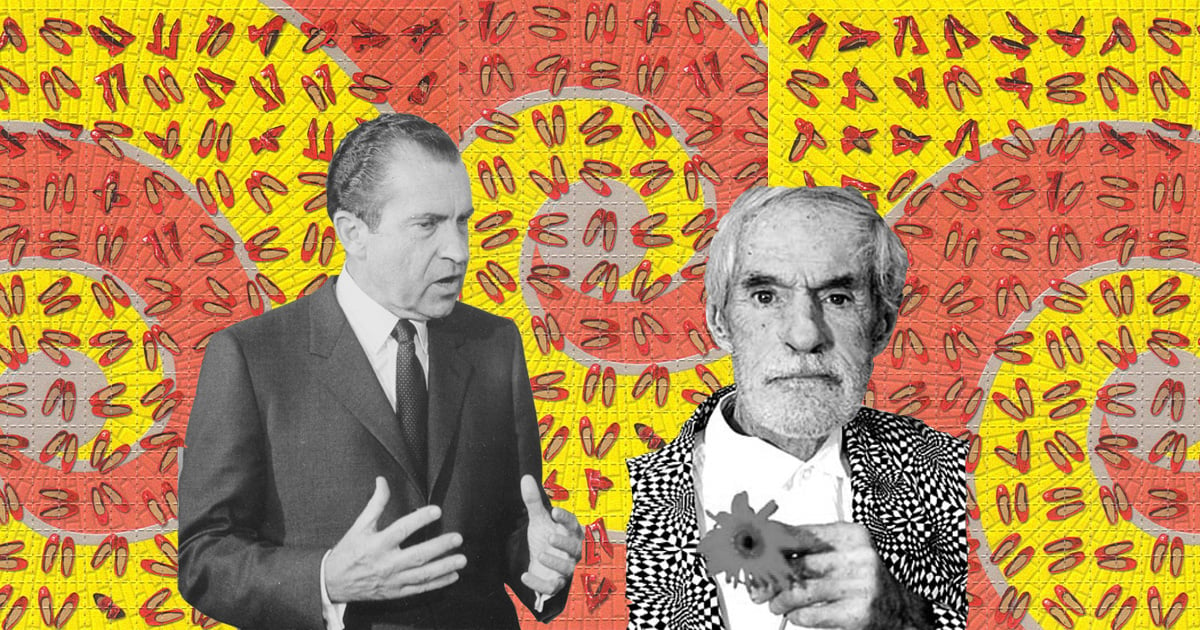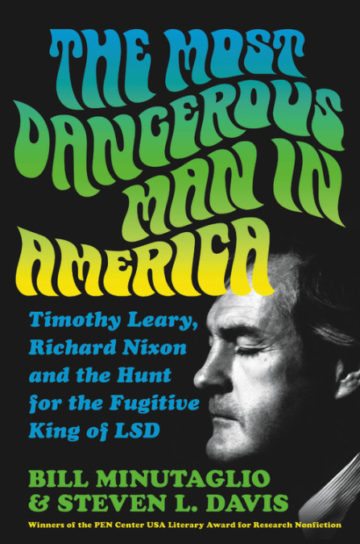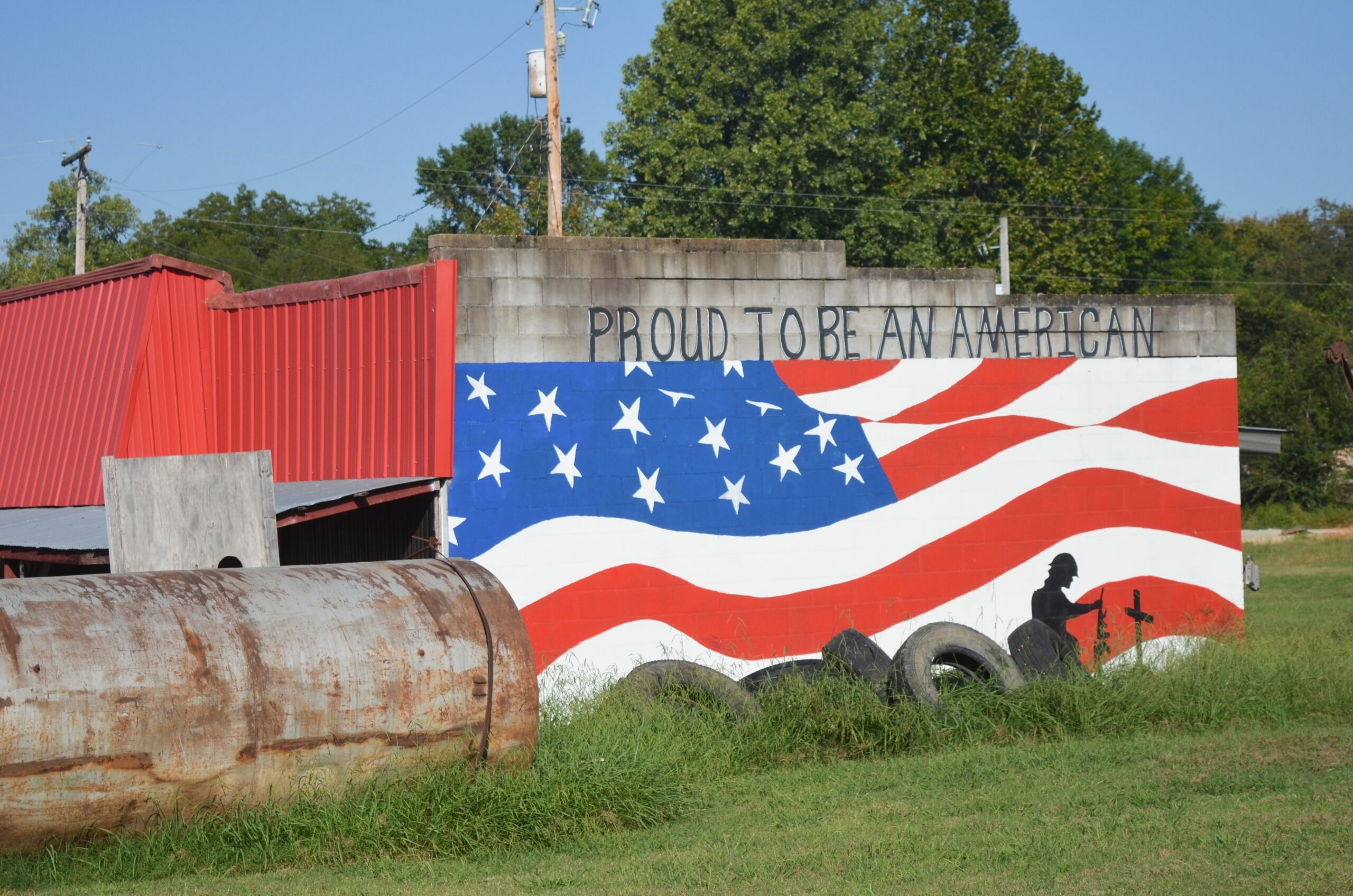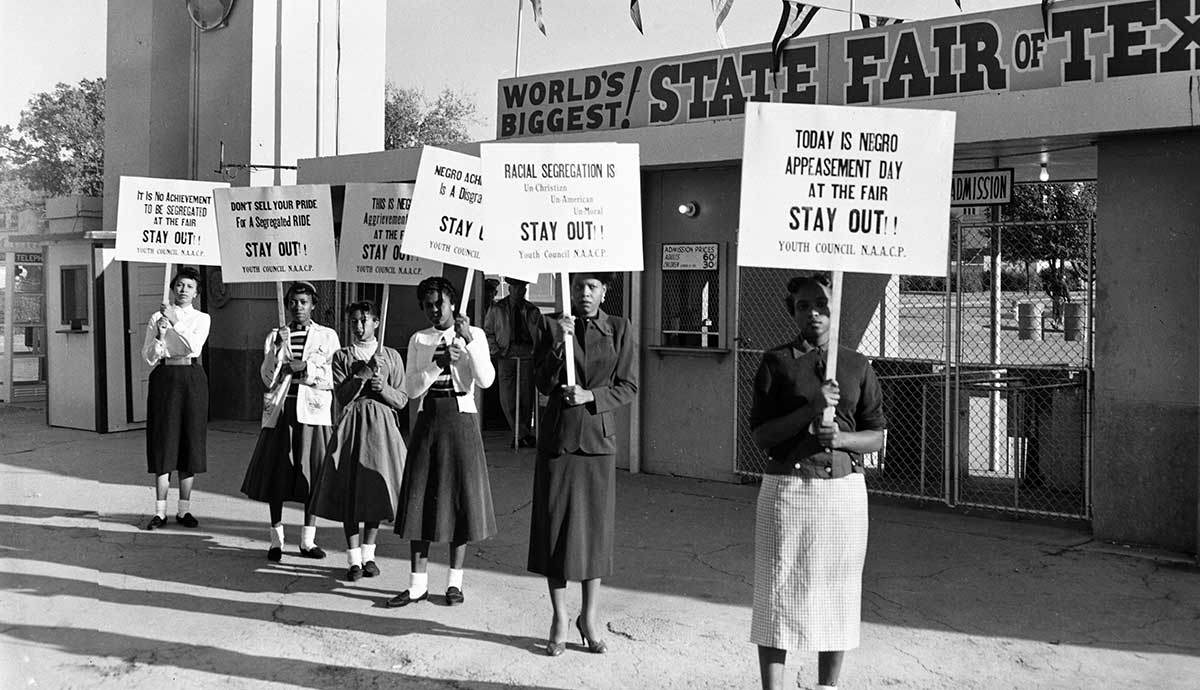
‘The Most Dangerous Man in America’ is a Pleasant Flashback to One of the Wildest Stories of the ’60s
In this deeply reported new book, two Texas authors interrogate the deeper meaning of Timothy Leary, Richard Nixon and LSD.

Above: Richard Nixon, Timothy Leary.
I was born in 1967. The 1960s, for me and most people my age and younger, are almost purely an abstraction. I’ve familiarized myself with more than a few facets of the decade’s art and literature and politics, and a lot of facets of its music, but the construct that is “The Sixties,” as distinct from the dated decade, will always appear to me, in the main, as a mental montage of napalmed Vietnamese children, grieving Kent State students, Apollo rocket launches, dead Kennedys, flowers in rifle barrels, civil rights marches and Altamont, etc. — all of it reinforced by 10,000 viewings of almost identical montages as they’ve appeared in every sort of popular media ever since.
Every one of those images has a story behind it. It’s tempting to think they might all have been told. Not this one.

Twelve Books
$30; 400 pages
Timothy Leary is probably most enduringly famous as the man who encouraged American kids to “turn on, tune in and drop out,” i.e., trip on acid. In the pantheon of quasi-authoritative psychedelic legitimizers, Leary was king. Like a lot of people, I knew the outlines of his story. And I saw him perform, once, at the 1987 River City Reunion in Lawrence, Kansas, alongside Allen Ginsberg, Keith Haring, Andrei Codrescu, William S. Burroughs and Hüsker Dü. He was a sort of stand-up philosopher at that point, a decade before his death, and the impression he made on me was strangely neutered. He’d become an evangelist for space travel and, presciently, networked computers, four years before the birth of the World Wide Web. I remember mocking the Cosbyesque sweater he was wearing. Later, I had occasion to write about a Houston company, Celestis, that briefly advertised the service of shooting cremated ashes into space. Leary had signed up to be at least partially so disposed of.
In The Most Dangerous Man in America, I learned that Leary later changed his mind. And he must have later changed it yet again, because the New York Times reported that on April 22, 1997, a vial of Leary’s ashes was launched on a Pegasus rocket, hitching a ride alongside Star Trek creator Gene Roddenberry and 22 others into orbit with a Spanish satellite.
It turns out that Tim Leary changed his mind about a lot of things — the recommendability of armed insurrection, for instance — though not, apparently, about the benefits of mind-altering drugs. There is enough high-quality hash, weed, acid, booze and tobacco in The Most Dangerous Man in America to make Hunter S. Thompson blanch.
But the book is more than a treasure trove of trivia for Leary freaks. It’s a solvent that dissolves the calcified montage of the ’60s and replaces it with an incredibly detailed moving picture of a specific time (May 1970 through January 1973) and places (California, Algiers, Beirut, Switzerland) in which some incredibly interesting people were doing some deeply weird shit. The book reads like authors Bill Minutaglio and Steven L. Davis somehow went back in time and strapped GoPros to the most compelling people in (and out) the country, and then transcribed the whole janky scene. And it accomplishes that feat without the slightest whiff of literary trickery. It’s just straight-up reported prose written in an incessantly immediate present tense. You may not have been there, but you turn the last page with the distinct feeling of having begrudgingly left the strangest party you ever expect to be lucky enough to crash.
There is enough high-quality hash, weed, acid, booze and tobacco in The Most Dangerous Man in America to make Hunter S. Thompson blanch.
The party started, in this book’s rollicking telling, with Leary, then 50 years old, a former Harvard psychology professor already highly regarded as the godfather of the psychedelic ’60s, being bussed from one California prison to another: the California Men’s Colony-West (CMC), a minimum security facility for nonthreatening old men. He’s asked for the transfer, and gamed the penal system’s questionnaire, which, in a previous life, he’d helped create, to appear low-risk. He’d been convicted of possessing two marijuana cigarettes and sentenced to 30 years. In the authors’ recreation, “He’s carrying all his possessions in a small cardboard box — two packs of Bugler roll-your-own cigarette tobacco, two ballpoint pens, and rubber shower shoes that are a good-bye present from a murderer he met in another facility.” Here, on page 7, and not for the last time, the reader pauses to appreciate the uncanny granularity of detail that authors Minutaglio and Davis — a professor of journalism at the University of Texas and former Observer media columnist, and the curator of the Wittliff Collections at Texas State University, respectively — have unearthed from previously sealed FBI documents, court records, personal letters, government cables, unprecedented interviews, and Leary’s personal archivist, among other sources. If the subject matter weren’t so potentially triggering (unchecked misogyny, violence, chronic substance abuse), this book should be taught in journalism, history and political science departments nationwide. Story aside, The Most Dangerous Man in America is a triumph of the reporter’s art.
But the story is entirely too compelling to be set aside for even a second. Because Leary, of course, isn’t going to spend 30 years waiting to shuffleboard off this mortal coil in a California prison. On September 12, 1970, four months after his arrival at CMC-West, and just shy of seven months into his sentence, Leary shimmied along 100 feet of cable spanning the 12-foot, barbed-wire-topped chain link fence isolating him from the tumultuous world outside, made his way to a lawyer-arranged and Weather Underground-sponsored rendezvous a half-mile from the prison entrance with an 18-year-old driver sent by the drug-smuggling Brotherhood of Eternal Love, and disappeared into the night. Thus kicked off a global manhunt that captivated the international press and haunted the liquored dreams of President Richard M. Nixon, Leary’s funhouse-mirror doppelganger, and the man who, in search of a poster boy target for his law-and-order agenda, had labelled him the titular most dangerous man in America.
You turn the last page with the distinct feeling of having begrudgingly left the strangest party you ever expect to be lucky enough to crash.
I won’t attempt to recap in 1,200 words what takes Minutaglio and Davis 400 fast-paced and fat-free pages to recount, but even a partial roll call of characters should suffice to entice even casual students of the 1960s. Bill Ayers, G. Gordon Liddy and Eldridge Cleaver all make substantive appearances, alongside Leary’s first wife, Rosemary, his lover and common-law second wife, jet-setter Joanna Harcourt, a mysterious playboy arms dealer named Michel Hauchard and, in a creepy cameo at Folsom State Prison, where Leary finally lands in solitary confinement once his globe-trotting game of cat and mouse comes to a close, Charles Manson.
But despite its almost epic sweep, The Most Dangerous Man in America is finally the story of Leary and Nixon, two men who regarded each other as existential threats, both to each other and to their highly idiosyncratic visions of America. And in this telling, the two men had more in common than either surely recognized. Leary was a true psychedelic believer, yes — and good god, the frequency and quantity of the man’s LSD ingestion was staggering — but also a craven opportunist who took perhaps too much pleasure in, and no small advantage of, his celebrity. Nixon, like Leary, practiced a crass ethics of personal convenience, cynically plying his constituency for political advantage. And both men came close to crumbling under the weight of paranoia that is perhaps the most lasting legacy of their era, even as their fates affirmed an age-old adage: Just because you’re paranoid doesn’t mean they’re not out to get you.
Former Observer managing editor Brad Tyer edits the Missoula Independent in Montana.


